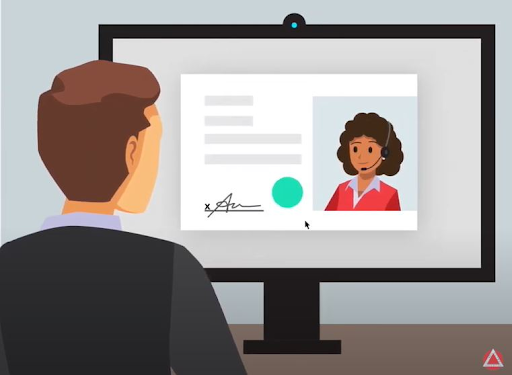Notaries play a crucial role in important community transactions, like home purchases and business agreements. They make sure everyone trusts the process and feels confident about what they’re doing. Now, there’s something called remote online notarization or RON, which makes notaries even more helpful. With RON, notaries can assist people from different places without being physically present.
Here’s how it works- If a notary is in a state that allows RON they follow the rules and get the right certification, they can use this technology. It’s like having a superpower for notaries. They can grow their business because they can help people from all over, not just in their local area.
So, RON is like the modern tool that can make notaries even more awesome and helpful in today’s digital world. It’s all about making sure important transactions are safe, secure, and convenient for everyone involved.
Remote Online Notarization (RON) is a streamlined and secure way to notarize documents online, ensuring the authenticity of signatures and the integrity of the transaction. Here’s a simplified six-point process flow of how RON typically works:
1. Document Preparation
The process begins with the document(s) that need notarization being prepared electronically. These documents are often in PDF or other digital formats.
2. Verification of Identity
The individual seeking notarization, known as the signer, initiates the RON session with a certified online notary. During this step, the signer’s identity is thoroughly verified through a series of identity authentication questions or biometric verification methods, like facial recognition or fingerprint scans. This ensures that the right person is signing the documents.
3. Video Conference
The signer and the online notary engage in a live video conference using a secure online platform. This step is crucial as it allows the notary to witness the signing process in real time.
4. Signing and Verification
The signer electronically signs the document in the presence of the online notary. The notary, having confirmed the signer’s identity, then adds their own electronic signature and notary seal to the document. This digital signature and seal are tamper-evident and provide strong security.
5. Audio-Visual Recording
Throughout the video conference, an audio-visual recording captures the entire session, ensuring there is a record of the signing process. This recording serves as additional evidence of the notarization’s legitimacy.
6. Document Transmission and Storage
Once the notarization is complete, the digitally notarized document is securely transmitted to the signer and any other relevant parties involved in the transaction. The document is also stored securely, usually in a digital vault, to maintain its integrity and provide easy access for future reference.
Conclusion:
It’s important to note that the process may vary slightly depending on state regulations, the RON service provider, and the specific document being notarized. However, the core elements of identity verification, video conferencing, and secure digital signatures are common to all RON processes.It offers convenience, especially for individuals who can’t physically meet a notary, and maintains the same level of trust and legality as traditional notarization methods.

